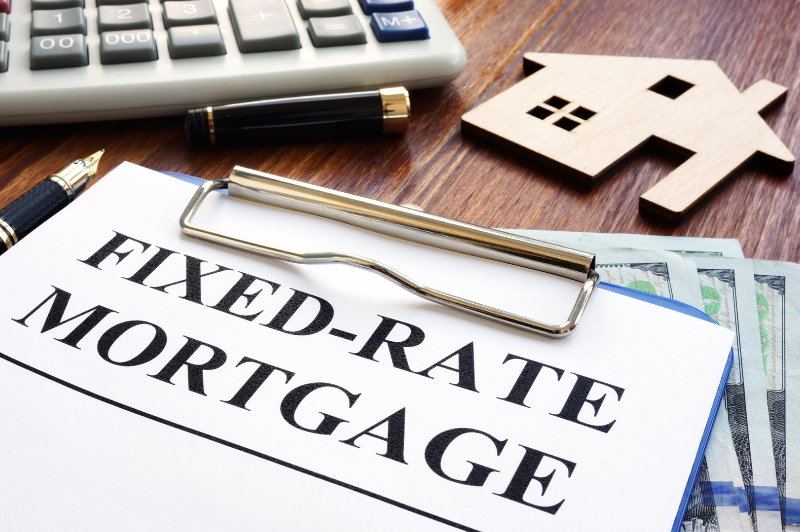The world of mortgages and finance can often feel like a foreign land where the language spoken is full of jargon and acronyms that seem to defy any understanding. However, fear not, for this blog will be your guide in untangling the web of complex terminology that you might come across if you’re speaking to mortgage advisors or thinking about lending. Let us take you through it!
1. APRC (Annual Percentage Rate of Charge)
The APRC isn’t just another piece of financial jargon; it’s a critical number when it comes to comprehending the true cost of borrowing. Think of it as an all-encompassing figure that not only includes the interest rate but also factors in other fees and costs associated with the mortgage. It’s akin to a magnifying glass, shedding light on the complete price tag of your borrowing journey.
2. SVR (Standard Variable Rate)
The SVR is more than just a jargon term; it’s the interest rate that a lender establishes for its standard mortgage products. It serves as the foundation upon which other rates are constructed. This rate can fluctuate at the lender’s discretion, influenced by market conditions, which can directly impact your monthly mortgage payments.
3. LTV (Loan-to-Value Ratio)
LTV, while it may sound like jargon, is a vital concept in the mortgage universe and is easier to grasp than you might think. It quantifies how much you’re borrowing in relation to the property’s value. For instance, an LTV of 80% means you’re borrowing 80% of the property’s value, and you’ll need to provide the remaining 20% as a deposit.

4. Fixed-Rate Mortgage
A fixed-rate mortgage is like having a steady compass in a sea of financial fluctuations. With this type of mortgage, your interest rate remains constant for a set period, usually two to five years. This stability can provide peace of mind, as your monthly payments won’t be affected by interest rate changes.
5. Tracker Mortgage
Imagine having a mortgage that’s tied to the stars, or rather, to the Bank of England’s base rate. A tracker mortgage does just that – it follows the base rate, typically with a set percentage added on top. If the base rate goes up or down, your interest rate and mortgage payments will do the same.
6. Porting
Nope, it’s not about moving ships from one place to another. Porting refers to the ability to transfer your existing mortgage deal to a new property when you move. This can be a handy option if you’re not yet at the end of your current mortgage term.
7. Redemption Penalty
Redemption penalties are like the fines you get for returning library books late, but in the mortgage world. If you repay your mortgage before the agreed-upon term is up, you might be subject to these penalties. So, it’s essential to be aware of any potential costs before considering early repayment.
8. Conveyancing
Conveyancing might sound like a term from a legal drama, but it’s crucial in the property world. It refers to the legal process of transferring ownership of a property from one party to another. Conveyancing involves various checks, searches, and paperwork to ensure a smooth and lawful transition.
9. Equity Release
Equity release isn’t about escaping from financial imprisonment; it’s about tapping into the value you’ve built up in your property. It’s a way for older homeowners to release some of the equity tied up in their homes without the need to move.

10. Help to Buy Scheme
The Help to Buy scheme is like a financial handrail for first-time buyers struggling to get onto the property ladder. It offers government-backed assistance in the form of equity loans or shared ownership arrangements, making homeownership more accessible.
11. Base Rate
The base rate is like the heartbeat of the economy, and it influences the interest rates set by lenders. Controlled by the Bank of England, fluctuations in the base rate can impact the cost of borrowing. When the base rate goes up, interest rates on variable mortgages are likely to follow suit.
12. Agreement in Principle (AIP)
Think of an AIP as a mortgage prelude, a nod from a lender that indicates your potential borrowing power. While not a guaranteed offer, it’s a handy way to demonstrate to sellers that you’re a serious buyer and can afford the property you’re interested in.
13. Stamp Duty
Stamp duty is like the government’s way of welcoming you to the property ownership club. It’s a tax you pay when buying property above a certain value. The amount varies based on the property price, and it’s important to consider this cost when budgeting for your new home.
14. Appraisal
Appraisal is like a property performance review, conducted by a surveyor. It assesses the property’s condition, value, and potential risks. The results help lenders determine if the property is worth the mortgage amount requested.
15. Variable Rate Mortgage
A variable rate mortgage is like a financial chameleon, adapting to market conditions. The interest rate can go up or down, based on changes in the lender’s SVR or external factors like the base rate.
16. Second Charge
A second charge is like a sibling mortgage; it’s an additional loan secured against your property. It’s often used for home improvements or consolidating debt, and it’s ranked second in priority after your primary mortgage in case of default.
17. Broker Fee
Broker fees are like the price of hiring a financial matchmaker. Mortgage brokers charge a fee for their services in finding you the right mortgage deal. While some brokers work on a commission basis, others charge a flat fee.

18. Bridging Loan
A bridging loan is like a financial bridge that covers the gap between buying a new property and selling your current one. It’s a short-term solution that provides funds until your existing property is sold, allowing you to secure your new home without waiting.
19. Unsecured vs. Secured Loans
Unsecured loans are like trust falls; they’re not backed by collateral like property. Secured loans, on the other hand, require an asset (like your home) to secure the loan. Mortgages are a prime example of secured loans, where the property acts as collateral for the loan amount.
Cracking the Code: A Little Clarity…
Armed with the meanings behind these jargon words, you’re hopefully now better equipped to understand mortgages as a customer! Remember, while the jargon might seem overwhelming at first, understanding these terms can empower you to make informed decisions and navigate the market with confidence. So, whether you’re discussing APRC, SVR, or any other mortgage topic, rest assured that you know more than you think!
Fancy working with us? We’d love to hear from you! Details about what we do and how to get in touch can be found via the link below:
Find out more about the roles we typically recruit for on our previous blog:
